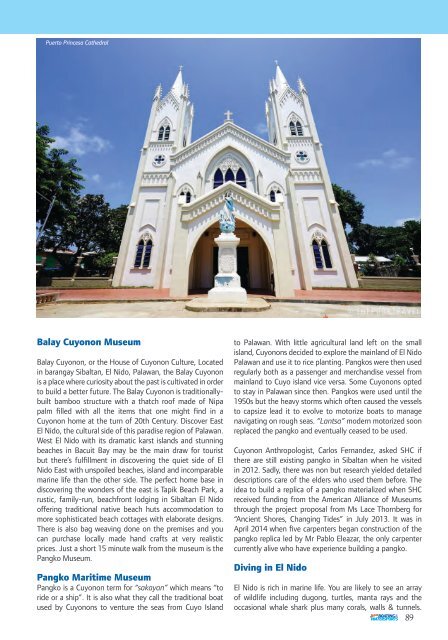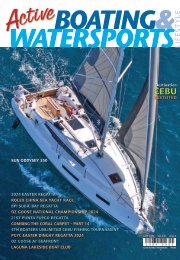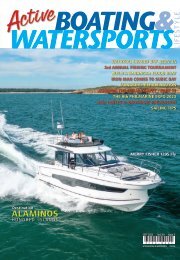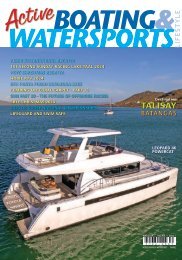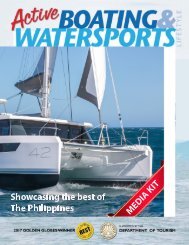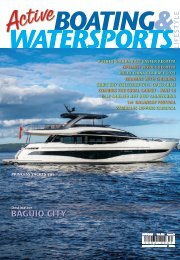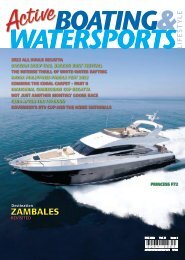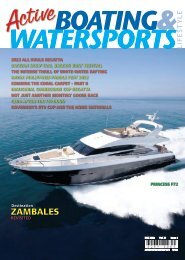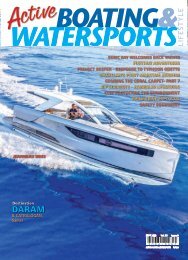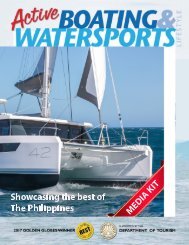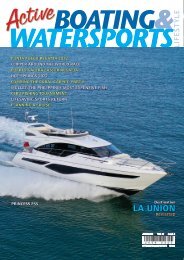You also want an ePaper? Increase the reach of your titles
YUMPU automatically turns print PDFs into web optimized ePapers that Google loves.
Puerto Princesa Cathedral<br />
Balay Cuyonon Museum<br />
Balay Cuyonon, or the House of Cuyonon Culture, Located<br />
in barangay Sibaltan, El Nido, Palawan, the Balay Cuyonon<br />
is a place where curiosity about the past is cultivated in order<br />
to build a better future. The Balay Cuyonon is traditionallybuilt<br />
bamboo structure with a thatch roof made of Nipa<br />
palm filled with all the items that one might find in a<br />
Cuyonon home at the turn of 20th Century. Discover East<br />
El Nido, the cultural side of this paradise region of Palawan.<br />
West El Nido with its dramatic karst islands and stunning<br />
beaches in Bacuit Bay may be the main draw for tourist<br />
but there’s fulfillment in discovering the quiet side of El<br />
Nido East with unspoiled beaches, island and incomparable<br />
marine life than the other side. The perfect home base in<br />
discovering the wonders of the east is Tapik Beach Park, a<br />
rustic, family-run, beachfront lodging in Sibaltan El Nido<br />
offering traditional native beach huts accommodation to<br />
more sophisticated beach cottages with elaborate designs.<br />
There is also bag weaving done on the premises and you<br />
can purchase locally made hand crafts at very realistic<br />
prices. Just a short 15 minute walk from the museum is the<br />
Pangko Museum.<br />
Pangko Maritime Museum<br />
Pangko is a Cuyonon term for “sakayan” which means “to<br />
ride or a ship”. It is also what they call the traditional boat<br />
used by Cuyonons to venture the seas from Cuyo Island<br />
to Palawan. With little agricultural land left on the small<br />
island, Cuyonons decided to explore the mainland of El Nido<br />
Palawan and use it to rice planting. Pangkos were then used<br />
regularly both as a passenger and merchandise vessel from<br />
mainland to Cuyo island vice versa. Some Cuyonons opted<br />
to stay in Palawan since then. Pangkos were used until the<br />
1950s but the heavy storms which often caused the vessels<br />
to capsize lead it to evolve to motorize boats to manage<br />
navigating on rough seas. “Lantsa” modern motorized soon<br />
replaced the pangko and eventually ceased to be used.<br />
Cuyonon Anthropologist, Carlos Fernandez, asked SHC if<br />
there are still existing pangko in Sibaltan when he visited<br />
in 2012. Sadly, there was non but research yielded detailed<br />
descriptions care of the elders who used them before. The<br />
idea to build a replica of a pangko materialized when SHC<br />
received funding from the American Alliance of Museums<br />
through the project proposal from Ms Lace Thornberg for<br />
“Ancient Shores, Changing Tides” in July 2013. It was in<br />
April 2014 when five carpenters began construction of the<br />
pangko replica led by Mr Pablo Eleazar, the only carpenter<br />
currently alive who have experience building a pangko.<br />
Diving in El Nido<br />
El Nido is rich in marine life. You are likely to see an array<br />
of wildlife including dugong, turtles, manta rays and the<br />
occasional whale shark plus many corals, walls & tunnels.<br />
89


